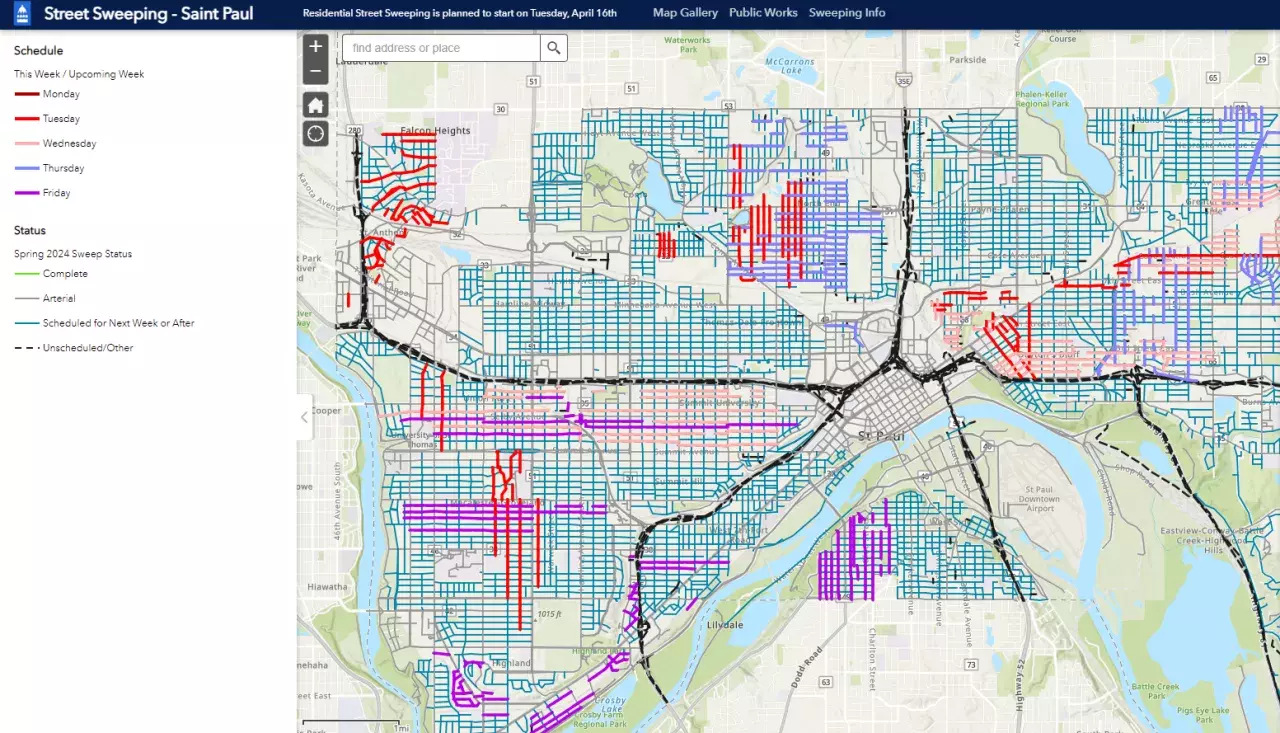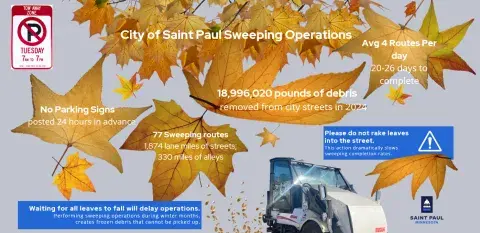2025 Residential Fall Sweep
Saint Paul's annual Residential Fall Sweep started on October 15.
Fall street sweeping operations are expected to take approximately six weeks, weather permitting. Please do not call to ask for re-sweeping of streets at this time. All available resources are working on designated sweeping routes.
Every fall and spring, the City of Saint Paul sweeps all residential streets - to keep them clean, and to keep debris out of our lakes, streams and rivers. It takes approximately four to six weeks to sweep all 530 miles of residential streets and 330 miles of alleys in Saint Paul. Alleys are only swept during the spring sweep. The city sweeps the 340 miles of arterial (main) streets on a regular schedule from April until October depending on weather conditions. Most arterial streets are swept at least 8 times per year. Our goal is to collect as much organic matter as possible preventing it from entering our sewers, and polluting our rivers, lakes and streams.
To help the sweeping efforts on all residential streets, please:
- Follow all temporary “No Parking” signs, which will be posted 24-48 hours in advance on residential streets. Please move all vehicles off the streets to avoid a ticket or tow.
- Follow all posted overnight hour "No Parking" restrictions on arterial and collector streets.
- Do NOT sweep leaves, dirt or additional garbage in the streets.
- Do NOT put garbage and recycling carts in the streets. Please keep all carts on the boulevard.
2025 Summer Residential Street Sweeping Completed
Saint Paul Public Works Street Maintenance Division completed a first-ever citywide summer sweeping of residential streets on October 13. Each week crews swept one or two routes, weather permitting. The routes are posted "No Parking" at least 24 hours in advance.


